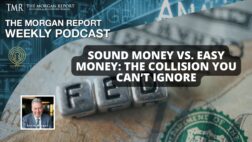A question I often receive is, “How high do you expect the price of silver and gold to reach?” The simple answer is that no one really knows for sure, but it will most likely be far higher than the average investor expects.
First, a bit of background. Almost all markets go from undervalued to fair valued to overvalued, and this basic element is overlooked by many investors. I recall the wails about how high the Dow Jones Industrials had reached at the 3000 level, which was a far cry from the eventual top.
As I write this, and place the precious metals into the context of their rightful place in the overall investment universe, it is quite easy for me to state that the precious metals are still in the undervalued stage.
For readers this might be a conundrum, because anyone interested in business and finance can easily recall recent headlines about gold hitting all-time highs. But, alas, anyone with even a minute amount of ability to think would ask the question, “What does ‘all-time high’ mean?” Certainly, in U.S. “dollar” terms, the price of gold is higher than the price of $850 reached January 21, 1980.
As true as this statement remains, we all must realize that the amount of money in the M1 money supply (the quantity of currency and the value of checking accounts owned by the public) is at least 6 times (600%) greater now in 2010 than it was in 1980. So to put gold at a real, not nominal, all-time high, gold would need to be far higher.
Many arguments and emotions revolve around the precious metals. Some people hold them in mystical realms, other in disgust. Certainly, we can be objective enough to state that both silver and gold do represent an asset class that attracts investment and they have been doing so in a strong manner for the past several years. I would argue that gold is a currency and in fact a long and most respected currency of worldwide proportions.
A simple rule of thumb to determine the paper price of an ounce of gold is to simply divide the M1 money supply by the gold supply, and magically, you determine the price of gold in dollars per ounce. In round numbers, M1 (St. Louis Fed) CURRENCY ONLY portion is 900 billion, and the official U.S. Gold reserve is (261.5 million troy ounces). This simple division problem gives $/oz of approximately $3400 per troy ounce.
Does this mean gold is going to trade above $3000 per ounce at some point? No it does not, but at least this thought experiment provides a bit of logical thinking behind the question, “How high can the price of gold reach?”
Some will argue that the full M1 should be used, not just the currency component. Others will insist that M3—the broadest measure of “money”—should be used, not M1. I have no argument at all. My point is simply factual: if we call gold a currency and we use only the currency component of M1, we derive an answer. That answer is $3400 per ounce, at least until the money supply grows further.
David Morgan
Mr. Morgan has followed the silver and gold market daily for over thirty years. Much of this Web site, www.silver-investor.com, is devoted to education about the precious metals.
You can get his Ten Rules of Silver Investing — click here



